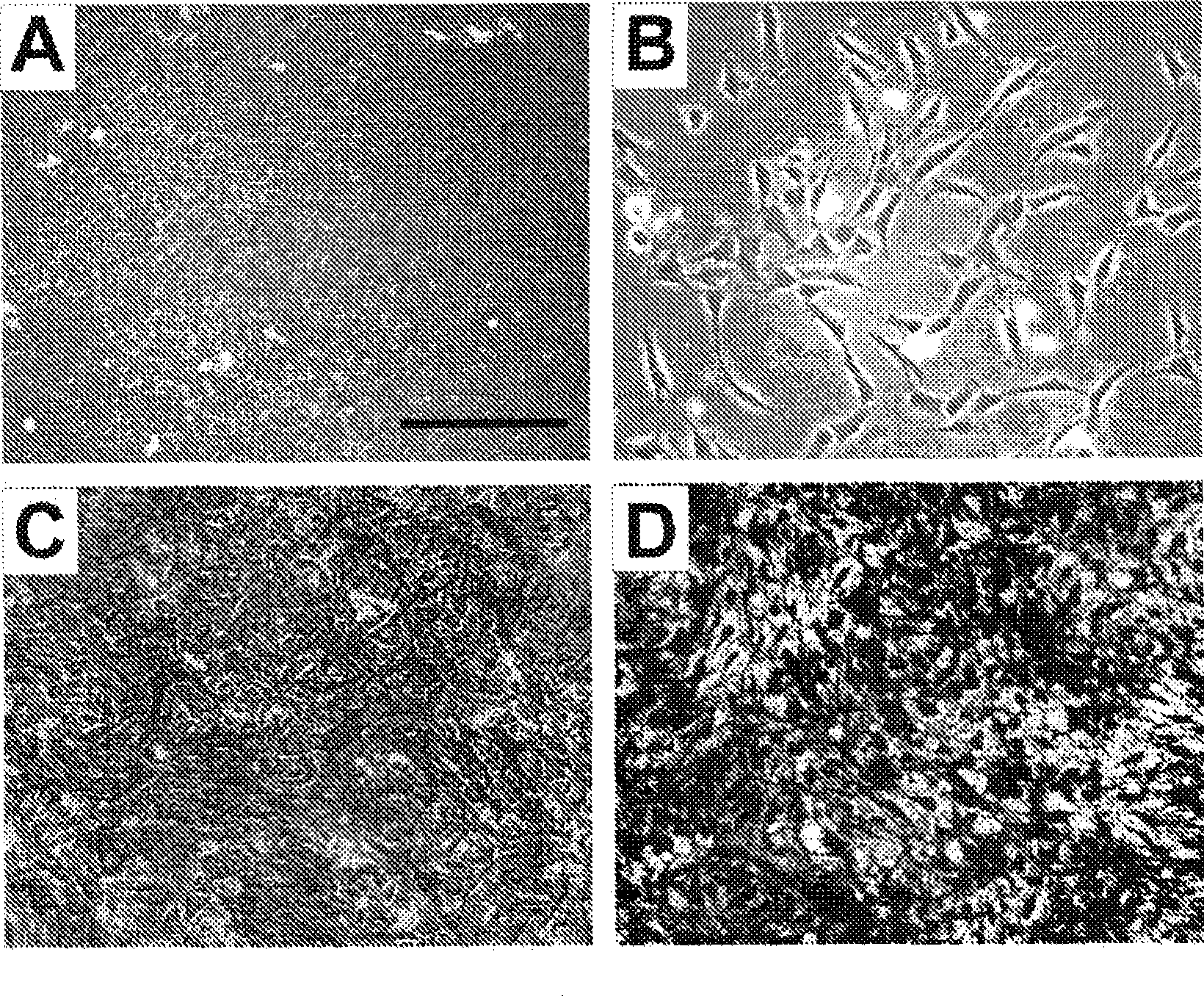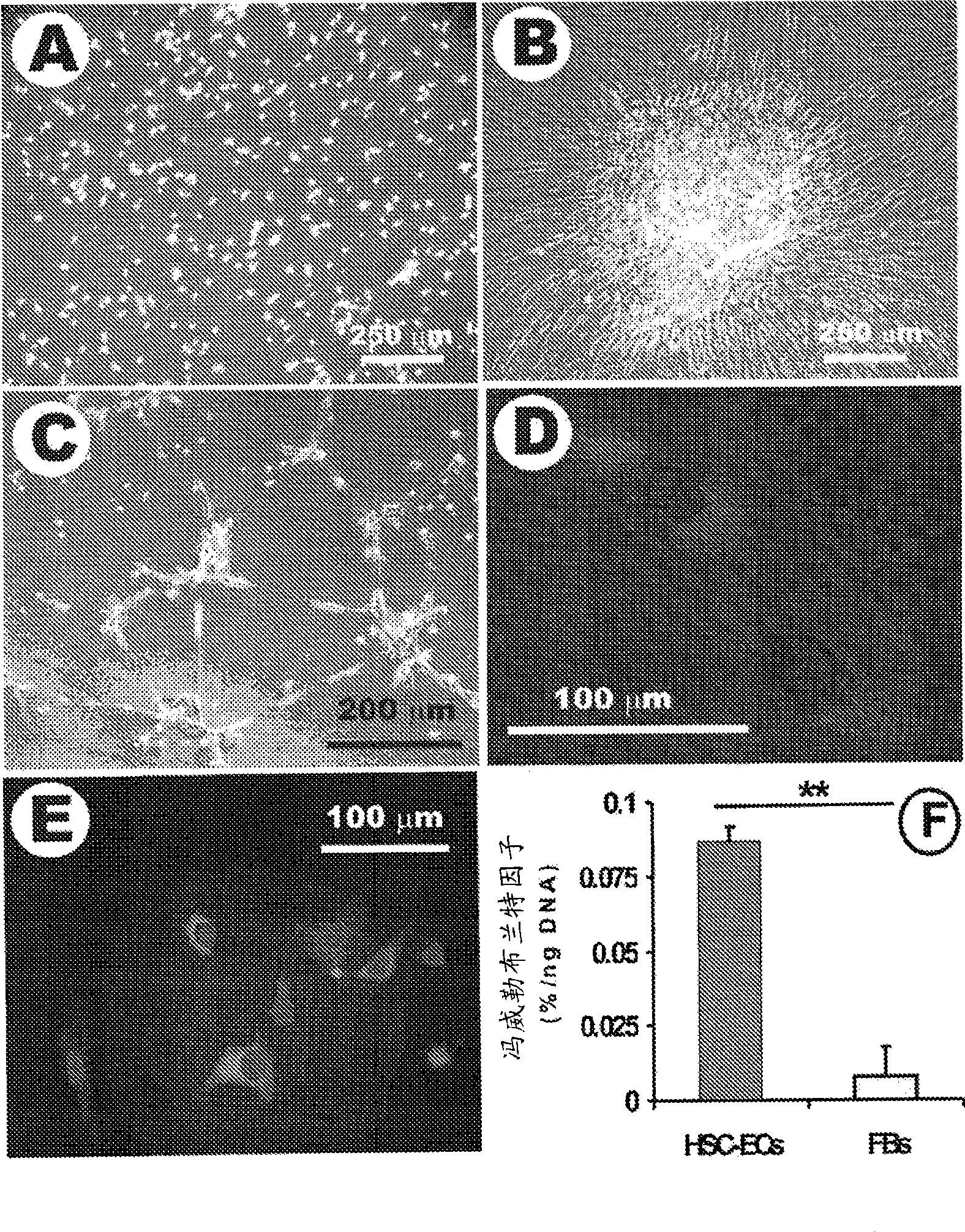De novo formation and regeneration of vascularized tissue from tissue progenitor cells and vascular progenitor cells
A technology of progenitor cells and vascularization, applied in tissue culture, filters in blood vessels, microorganisms, etc., can solve the problems of suboptimal anastomosis of cost and slow endothelial migration
- Summary
- Abstract
- Description
- Claims
- Application Information
AI Technical Summary
Problems solved by technology
Method used
Image
Examples
Embodiment 1
[0106] Example 1: Spatially co-seeded endothelial cells with MSC osteoblasts generate vessel-like structures in engineered bone constructs in vivo
[0107] Human bone marrow samples (AllCells, Berkeley, CA) were prepared according to previously established methods (Shi et al., 1998; Alhadlaq et al., 2004; Yourek et al., 2004; Marion et al., 2005; Moioli et al., 2006; Troken and Mao, 2006) isolated mesenchymal stem cells (MSC) and hematopoietic stem cells (HSC). figure 1 A depicts the bone marrow content of the initial plating showing a dense population of cells known to be heterogeneous. (See Alhadlaq and Mao, 2004; Marion and Mao, 2006).
[0108] Mesenchymal stem cells differentiate into osteoblasts. Two distinct cell lineages, human mesenchymal stem cells (MSCs) and human umbilical vein endothelial cells (HUVECs), were used for vascularized bone engineering in vivo.
[0109] MSCs were isolated from human bone marrow samples as described above (see e.g. figure 1 B) (Alhad...
Embodiment 2
[0115] Example 2: Differentiation of bone marrow-derived hematopoietic stem cells into endothelial cells in vitro.
[0116] For clinical applications, HSCs can be isolated from bone marrow along with MSCs, preferably by a minimally invasive route. HSCs have been found to undergo slow expansion (Shih et al., 2000; Li et al., 2004). FGF-2 has been shown to accelerate the rate of HSC expansion (Wilson and Trump, 2006; Yeoh et al., 2006). The inventors' experience is that HSCs do expand at a slower rate than MSCs and HUVECs. Alternatively, HSCs can be differentiated into endothelial cells followed by expansion of HSC-derived endothelial cells.
[0117] Bone marrow samples (supra) were prepared for HSC isolation. CD34 and magnetic bead separation were used to isolate non-adherent cells (EasySep. AllCells, Berkeley, CA). The isolated CD34 positive cells (CD34+) were considered as HSCs. In fibronectin-coated plates, HSCs appear as round cells (see e.g. image 3 A), whose shape ...
Embodiment 3
[0121] Example 3: Growth factors induce angiogenesis in polymer hydrogels in vivo.
[0122] It has been demonstrated herein that HSCs and MSCs are capable of differentiating into definitive cell lineages such as endothelial cells and osteoblasts, which constitute some of the building blocks of blood vessels and bone. It was also demonstrated that blood vessel-like structures can be built in vivo within bone scaffolds. However, existing literature has shown that engineered blood vessels can be leaky due to abnormally high endothelial cell permeability (Richardson et al., 2001; Valeski and Baldwin, 2003). To determine the effect of bFGF on host-derived angiogenesis, the angiogenic factor bFGF was delivered into a dense polymer hydrogel, poly(ethylene glycol) diacrylate (PEGDA), known in previous studies to be In vivo is impermeable to host-derived vascular cells (Alhadlaq and Mao, 2003; Alhadlaq et al., 2004; Alhadlaq and Mao, 2005; Stosich and Mao, 2006).
[0123] Suboptimal ...
PUM
| Property | Measurement | Unit |
|---|---|---|
| Average pore size | aaaaa | aaaaa |
Abstract
Description
Claims
Application Information
 Login to view more
Login to view more - R&D Engineer
- R&D Manager
- IP Professional
- Industry Leading Data Capabilities
- Powerful AI technology
- Patent DNA Extraction
Browse by: Latest US Patents, China's latest patents, Technical Efficacy Thesaurus, Application Domain, Technology Topic.
© 2024 PatSnap. All rights reserved.Legal|Privacy policy|Modern Slavery Act Transparency Statement|Sitemap



